vampirewitchreine
Junior Member
- Joined
- Aug 2, 2011
- Messages
- 82
This was a construction thing, but I don't have a compass..... could someone possibly tell me a program that would do the same thing that it's asking in the directions (Pictures from the book included).... Even though this seems like a simple problem, I'm only posting it due to lack of being able to follow the steps of the problem myself.
Construction: Parallelogram
Given two segments, construct a parallelogram with sides congruent to the segments.

1. Construct segment AB congruent to segment PQ
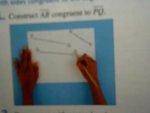
2. Construct segment BC congruent to segment RS
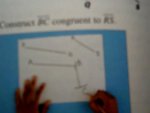
3. Draw an arc with center A and radius BC
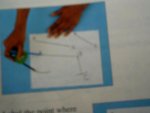
4. Draw an arc with center C and radius AB. The arc should intersect the arc you drew in step 3.
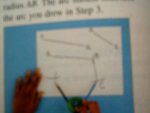
5. Label the point where the arcs intersect D. Draw segment AD and segment CD/ ABCD is a parallelogram.
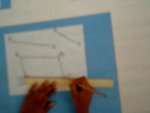
The following is the problem with which this is suppose to go with:
12. Writing Explain why ABCD must be a parallelogram.
(I also had the 2 following questions that go with this as well.... black is the question, blue is the type of question and the purple is my answer)
13. Open-ended Problem Describe two different ways to check that ABCD is a parallelogram. Show that both opposite sides are congruent and show that the diagonals intersect each other.
14. Writing How can you use the construction shown above to construct a rhombus? Lines RS and PQ would need to be congruent, making lines AB and BC congruent.
Sorry that the images are so poor.... my scanner is acting up and my webcam can't take a very clear picture.
Construction: Parallelogram
Given two segments, construct a parallelogram with sides congruent to the segments.

1. Construct segment AB congruent to segment PQ

2. Construct segment BC congruent to segment RS

3. Draw an arc with center A and radius BC

4. Draw an arc with center C and radius AB. The arc should intersect the arc you drew in step 3.

5. Label the point where the arcs intersect D. Draw segment AD and segment CD/ ABCD is a parallelogram.

The following is the problem with which this is suppose to go with:
12. Writing Explain why ABCD must be a parallelogram.
(I also had the 2 following questions that go with this as well.... black is the question, blue is the type of question and the purple is my answer)
13. Open-ended Problem Describe two different ways to check that ABCD is a parallelogram. Show that both opposite sides are congruent and show that the diagonals intersect each other.
14. Writing How can you use the construction shown above to construct a rhombus? Lines RS and PQ would need to be congruent, making lines AB and BC congruent.
Sorry that the images are so poor.... my scanner is acting up and my webcam can't take a very clear picture.
